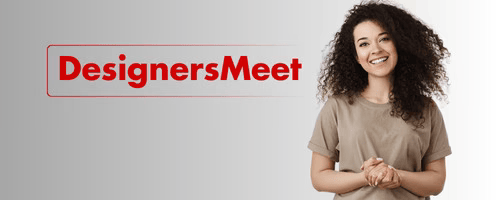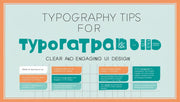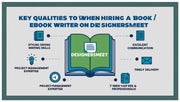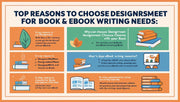Typography is more than just choosing a font. It plays a fundamental role in how users interact with and understand your interface. In the world of UI/UX design, well-executed typography improves readability, creates visual hierarchy, and enhances the overall user experience.
This blog provides essential typography tips that will help designers craft clear, accessible, and engaging user interfaces.
Why Typography Matters in UI Design
Typography affects how users perceive information, navigate layouts, and engage with content. Poor typography can lead to:
-
Confusion and frustration
-
Difficulty in reading or scanning content
-
Reduced trust in the product
On the other hand, great typography:
-
Directs attention effectively
-
Communicates brand personality
-
Improves usability and accessibility
Keyword Highlight: UI typography best practices, importance of typography in design, readable UI fonts
1. Choose Readable Fonts
Always prioritize legibility over style. Choose fonts that are easy to read across different screen sizes and resolutions. Sans-serif fonts like Roboto, Open Sans, or Lato are commonly used in digital interfaces due to their clarity.
Avoid overly decorative fonts in body text. Reserve stylized fonts for headers or branding.
Keyword Highlight: readable fonts for UI, best fonts for digital design, clean typography
2. Establish a Visual Hierarchy
Typography helps establish a visual hierarchy by organizing content into sections of importance. Use variations in:
-
Font size
-
Weight (regular, bold)
-
Color
-
Letter spacing
A clear hierarchy makes it easier for users to scan and understand content quickly.
Keyword Highlight: typographic hierarchy, font weight usage, text structure in UI
3. Stick to a Limited Font Palette
Using too many fonts can make your design look chaotic. Most designers follow the “two-font rule”—one for headings and another for body content.
Consistent font usage promotes visual cohesion and a better user experience.
Keyword Highlight: font pairing tips, limited font palette, consistent typography design
4. Use Appropriate Font Sizes
Font size should adapt to different screen sizes and contexts. For example:
-
Headlines: 24–32px
-
Subheadings: 18–24px
-
Body text: 14–16px
Always test your typography on both mobile and desktop screens for responsive readability.
Keyword Highlight: responsive font sizes, typography for mobile UI, optimal text size in design
5. Maintain Proper Line Spacing and Letter Spacing
Poor spacing can ruin even the best typefaces. Maintain enough line height (usually 1.4–1.6x the font size) and letter spacing to enhance legibility.
Proper spacing creates breathing room and prevents visual clutter.
Keyword Highlight: line height in UI, kerning and tracking tips, typographic spacing best practices
6. Choose the Right Line Length
The optimal line length for body text is 50–75 characters per line. Anything longer or shorter may cause strain or confusion for the reader.
Breaking content into shorter lines also improves content scannability, especially on smaller screens.
Keyword Highlight: line length for web content, text readability guidelines, scannable UI text
7. Consider Accessibility
Typography should support inclusive design. Use sufficient contrast between text and background to meet WCAG accessibility standards. Avoid low-contrast text (e.g., light gray on white).
Also, ensure your text is readable by screen readers by avoiding text embedded in images.
Keyword Highlight: accessible typography, color contrast standards, inclusive UI design
8. Use Web-Safe Fonts or Host Custom Fonts Properly
If you’re using custom fonts, make sure they load quickly and display correctly. Alternatively, choose web-safe fonts or host Google Fonts for optimal performance.
Font loading issues can disrupt the user experience and cause layout shifts.
Keyword Highlight: web-safe fonts, custom font loading, optimize font performance
9. Test Across Devices and Resolutions
Typography must be responsive. What looks good on a large desktop may be unreadable on a smartphone. Use media queries and fluid typography techniques to adjust sizes and spacing based on screen size.
Keyword Highlight: responsive typography techniques, UI font testing tools, adaptive text layout
10. Align Text for Better Flow
Left-aligned text is typically the most readable for Western languages. Centered or right-aligned text should be used sparingly, mainly for headings or callouts.
Proper alignment improves text flow and reduces cognitive load.
Keyword Highlight: text alignment tips, left-aligned text best practices, UI layout consistency
Conclusion
Effective typography is the backbone of great UI design. By focusing on clarity, hierarchy, spacing, and responsiveness, you can create interfaces that are not only visually appealing but also intuitive and accessible. At DesignersMeet.com, we believe typography is more than a detail—it’s a design pillar that can make or break the user experience.




